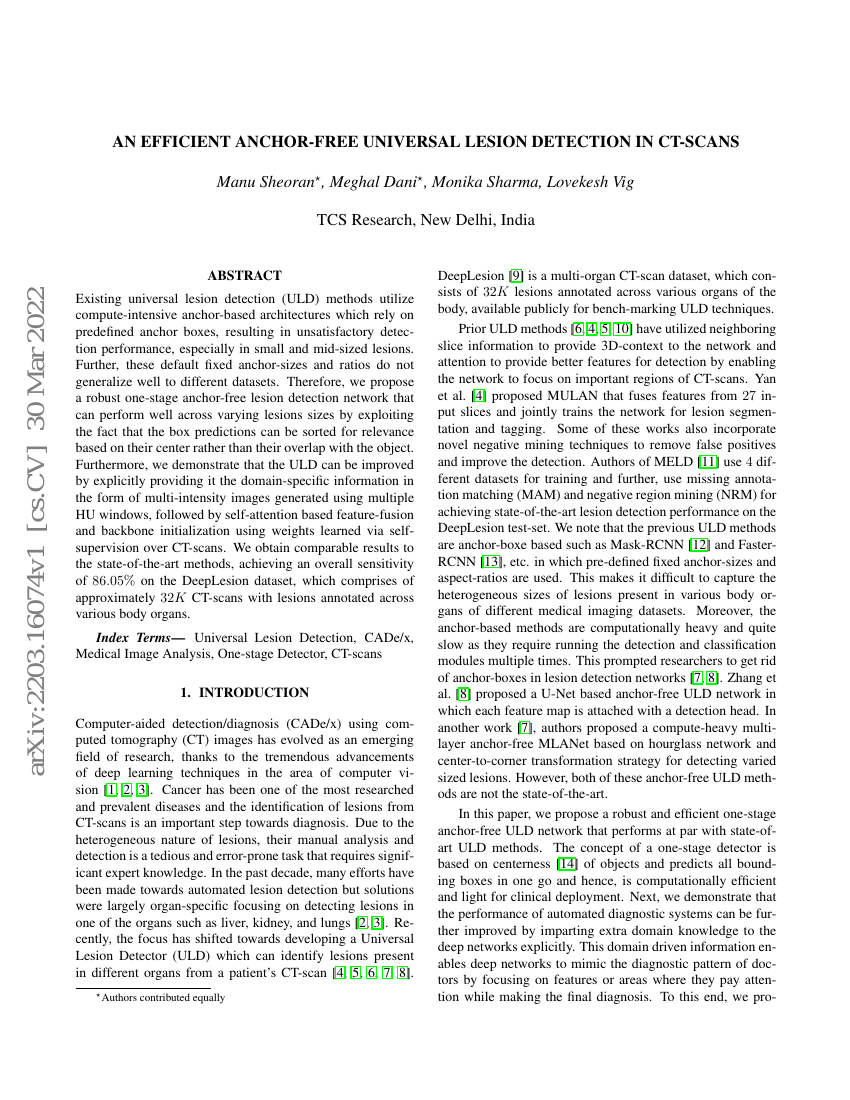Command Palette
Search for a command to run...
Sheoran Manu ; Dani Meghal ; Sharma Monika ; Vig Lovekesh

Abstract
Existing universal lesion detection (ULD) methods utilize compute-intensiveanchor-based architectures which rely on predefined anchor boxes, resulting inunsatisfactory detection performance, especially in small and mid-sizedlesions. Further, these default fixed anchor-sizes and ratios do not generalizewell to different datasets. Therefore, we propose a robust one-stageanchor-free lesion detection network that can perform well across varyinglesions sizes by exploiting the fact that the box predictions can be sorted forrelevance based on their center rather than their overlap with the object.Furthermore, we demonstrate that the ULD can be improved by explicitlyproviding it the domain-specific information in the form of multi-intensityimages generated using multiple HU windows, followed by self-attention basedfeature-fusion and backbone initialization using weights learned viaself-supervision over CT-scans. We obtain comparable results to thestate-of-the-art methods, achieving an overall sensitivity of 86.05% on theDeepLesion dataset, which comprises of approximately 32K CT-scans with lesionsannotated across various body organs.
Benchmarks
| Benchmark | Methodology | Metrics |
|---|---|---|
| medical-object-detection-on-deeplesion | FCOS | Sensitivity: 86.05 |
Build AI with AI
From idea to launch — accelerate your AI development with free AI co-coding, out-of-the-box environment and best price of GPUs.